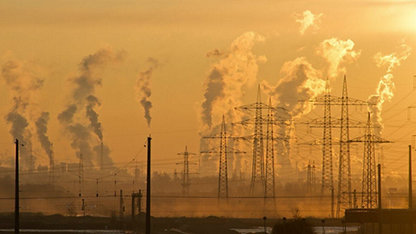The impacts of the global COVID-19 outbreak on our daily lives are inescapable. As a humanitarian crisis it has no parallel, being the most significant threat to our existence in peacetime.
It emphasises the interconnectivity of society around the globe, and how fragile our existence is on this planet. In a matter of weeks the economies of the world have been brought to a grinding halt, likely as a result of poor food hygiene at an outdoor market in a province most people have never heard of. Billions of people have been affected, and billions more will be by the global recession that will follow like an economic tsunami. It’s happened so quickly.
But just as the virus is an unseen enemy, so is climate change. The lack of reaction to COVID-19 by governments in the west squandered the time society could have used to prepare. This has resulted in drastic action becoming necessary, in the form of lockdowns in most countries. This slows the virus, but does not stop it.
Are we not repeating mistakes we have already made and continue to make with climate change? Its insidious impacts on global society have been talked about by governments around the world at innumerable summits and conferences. Yet little has been done in practical terms.
In fact, climate change is nothing new. We have known about the possibility of it for nearly 200 years. French physicist Joseph Fourier described the Earth’s natural greenhouse effect in 1824, and by 1896 Swedish chemist Svante Arrhenius had concluded that industrial-age coal burning would enhance this natural phenomenon.
In 1975, US scientist Wallace Broecker introduced the term ‘global warming’ to the public domain. In 1989, UK prime minister Margaret Thatcher – a graduate in chemistry – called for a global treaty on climate change and since then there has been summit after summit, with the 25th UN Climate Change Conference (COP25) taking place last December in Madrid.
“Just as the virus is an unseen enemy, so is climate change. The lack of reaction to COVID-19 by governments in the west squandered the time society could have used to prepare. ”
In physical terms, the changing climate is evident in the following ways:
- The planet's average surface temperature has risen about 0.9°C since the late 19th century, a change driven largely by emissions into the atmosphere from human activity.
- The Greenland and Antarctic ice sheets have decreased in mass over the past three decades. Data from NASA's Gravity Recovery and Climate Experiment show that Greenland lost an average of 286bn tonnes of ice per year between 1993 and 2016, while Antarctica lost about 127bn tonnes a year during the same period. The rate of ice mass loss from Antarctica has tripled in the past decade.
- Glaciers are retreating almost everywhere around the world, including the Alps, Himalayas, Andes, Rockies, Alaska and Africa.
- Global sea levels have risen by more than 20cm in the past century.
- Arctic sea ice has declined rapidly over the past few decades.
- Extreme weather events are becoming the new norm.
- The acidity of the oceans has increase by 30 per cent since the beginning of the First Industrial Revolution.
The effects are normally felt by the world’s poor at the margins of habitation, leading to large-scale global migrations and long-term food and water security issues. But another effect of climate change is extreme flooding.
The world is on the whole nearly 1°C warmer than it was in pre-industrial times, and every degree means there is seven per cent more water in the atmosphere and more precipitation during heavy rain events. If the climate continues to warm at the rate it has, heading towards a 3°C rise on pre-industrial levels, storms will bring 20 per cent more rain than they do now.
Western economies are not equipped to deal with this; but climate change must become an integral part of flood risk management. Only recently have researchers found both increases and decreases in observed river flood discharges in the past five decades in Europe thanks to increasingly open access to continent-wide databases, and this information can help to shape our preparation for and response to future events.
While we piece together our understanding of the environment’s interconnectivity around the planet, we are finding that – as with the novel coronavirus – the solutions are global rather than local. Nothing will be the same once the pandemic is over – but will that also be true for our understanding of flooding and climate change?
- Philip Wilbourn FRICS is chief executive officer at Wilbourn & Co












